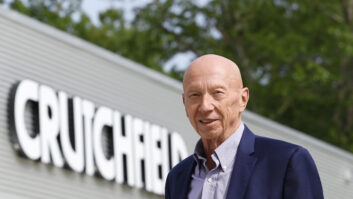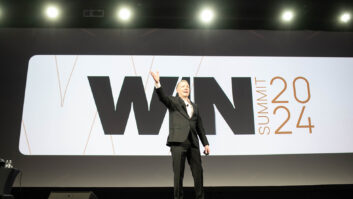With Michael Dell once again at the controls of the company founded in 1984, analysts are trying to cipher out if the company’s long-standing direct-to-customer model is still viable or if a change is in order.
While Dell does have a large, mall-based kiosk program where customers can see and order PCs, it has stayed true to its direct-to-customer roots; however, with the effectiveness of this model now in question, the idea of Dell trying something retail-oriented is gaining some traction among certain industry watchers.
The one unanimous thought is whichever path Dell chooses, he is now solely responsible for its success or failure after ousting his right-hand man and company CEO Kevin Rollins on Jan. 31. Rollins resigned his leadership role and from the board with no notice or explanation. With Rollins out of the picture industry watchers believe Dell will have to make some major changes on his own.
The first move was made late last week when Dell started selling two Sony Bravia LCD TVs and said it is looking to add more brands to its merchandise mix. Dell gave no further details at press time.
“Kicking [Rollins] under the bus was not the right thing to do,” Steve Baker, industry analysis VP for The NPD Group said, “plus Dell had been hands on as chairman, so if the problems could have been fixed, he should have done so already.”
The primary problems confronting Dell, both the man and the company, include very heated competition from a resurgent Hewlett-Packard, which has grabbed the lead in worldwide PC shipments from Dell and made inroads in U.S. share since Mark Hurd took over as CEO, according to data from IDC and Gartner. Other issues involve continuing difficulty connecting with the consumer market, a possible de-listing by NASDAQ, and recent allegations spun off from an anti-trust lawsuit by chip-maker AMD that claim Dell received, then hid, payments from stockholders from Intel to only use that company’s processors.
“Things have not gone well for Dell in the last two years. [Fourth-quarter 2006] PC shipments were down 8 percent on a worldwide basis compared to a year ago, and it has been pushed into second place by HP in the leader table. Its stock price is 30 percent down compared to when Kevin Rollins took over in 2004. It is also the subject of an SEC investigation,” said Charles Smulders, Gartner’s managing VP of its client computing group.
Regaining its place atop the market is expected to be Dell’s first chore. Since the company has lagged under its direct model, the quickest fix suggested is for Dell to go retail in some fashion. However, this so greatly contrasts with how Dell is constructed to do business that analysts believe it would be a very difficult, but not impossible to change.
“This would be a challenge. The fabric of Dell is its direct model,” said David Daoud, IDC’s manager of U.S quarterly PC tracker and personal systems.
Dell’s build-to-order model allows it to collect money from its customers first and then deliver the product, but going to a build-to-forecast situation creates the headache of forecasting demand, inventory and dealing with a third party — retailers, Daoud said, adding the direct model, as currently operated, is failing and he sees either Dell changing how it handles the direct business or some type of channel strategy.
On a positive note, Daoud called Dell’s staff resourceful and he expects the company to turn itself around at some point.
Baker said HP needs a much stronger consumer focus, but going retail à la HP probably is not in the cards.
“A Dell store might work, but traditional retail would be hard. They just don’t know it,” Baker said, adding that Dell is set in its direct model and it must figure out how to make that work.
Smulders believes it is highly unlikely Dell will continue with a purely direct model.
A shake-up in the company’s merchandise mix could also be forthcoming, Baker said, although getting away from a category such as flat-panel TVs or printers would be difficult considering how much time, energy and money have been devoted to these segments.
“The company needs to accelerate its push into higher-margin enterprise product and services. This may involve acquisitions. At the same time, if it wants to continue to be a global player, it needs to find ways to better address the needs of consumers and customers in emerging markets,” Smulders said.
All the analysts believe that Dell will stay on as CEO until the company is fixed. As when Steve Jobs came back to run Apple, Dell’s hands on the wheel will help rebuild investor confidence and show that the company is serious about a turnaround, Daoud said.













